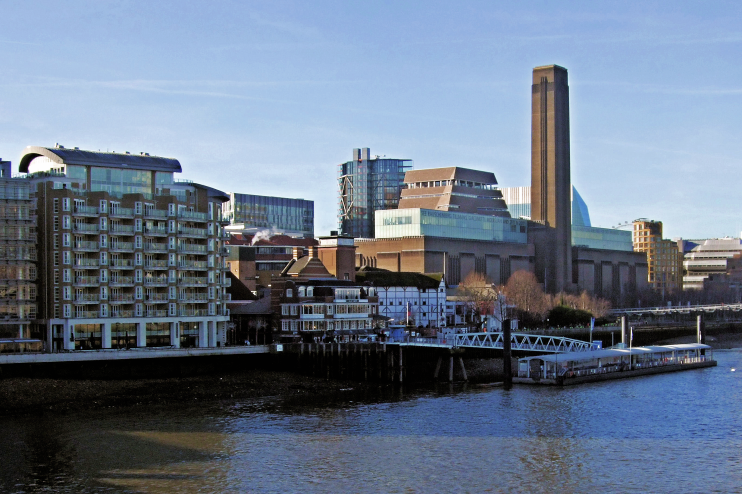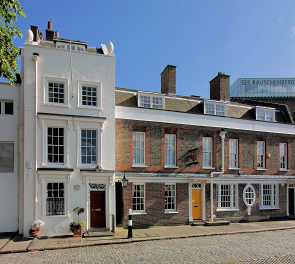Bankside
Bankside, Southwark
A revived riverside cultural destination, situated on the south side of the Thames between Blackfriars and Southwark Bridges

Bankside has had a remarkably consistent history as a place of often bawdy entertainment. As it fell outside the City’s jurisdiction, it was free to allow practices outlawed elsewhere. The ladies who worked at Bankside’s houses of ill repute were known as ‘Winchester geese’ because of the tolerance extended by the bishops of Winchester, who owned the properties and benefited from the tax revenues. Bankside’s oldest theatre was the Rose, built around 1587; it had disappeared before the outbreak of the Civil War.
The Globe, where William Shakespeare was a shareholder and premiered many of his plays, was put up in 1599 and destroyed in a fire started by a cannon during a performance of Henry VIII in 1613. It was rebuilt but the new theatre also had a short life, making way for tenements in 1644 after being closed by the Puritan administration two years earlier. Later in the century Sir Christopher Wren is said to have watched the building of St Paul’s Cathedral from a house on Bankside’s waterfront.
Beer was another of Bankside’s attractions. The Anchor brewery on Park Street was founded in 1616 and by the mid-19th century was reputedly the largest in the world. Its owner, Barclay Perkins, merged with Courage, another Southwark brewer, in 1955. The Anchor closed in 1981 and the buildings were demolished. The brewery represented part of the industrialisation of Bankside, creating a growing working-class population as Southwark expanded southwards. Peabody Square off Blackfriars Road was one of the biggest late-Victorian experiments in providing purpose-built model homes for the working poor.
Bankside suffered like other riverside areas from German bombing in the Second World War and from post-war industrial decline – but recent decades have seen an upturn in its fortunes, bringing it round full circle to its original role.

The remains of the Rose theatre were discovered in 1989, reviving public interest in the area’s dramaturgical past, which was already being encouraged by American actor-director Sam Wanamaker. His plans to rebuild the Globe took many years to bear fruit but in 1996 a recreation of the 17th-century theatre (based on scholarly guesswork) was opened on a site by the Thames not far from the original’s home.
As a tourist attraction the Globe was topped by the conversion of Sir Giles Gilbert Scott’s Bankside power station into the Tate Modern art gallery by the Swiss architects Herzog and De Meuron. So successful has Tate Modern been that the curators have been busy extending the gallery in every possible direction.
